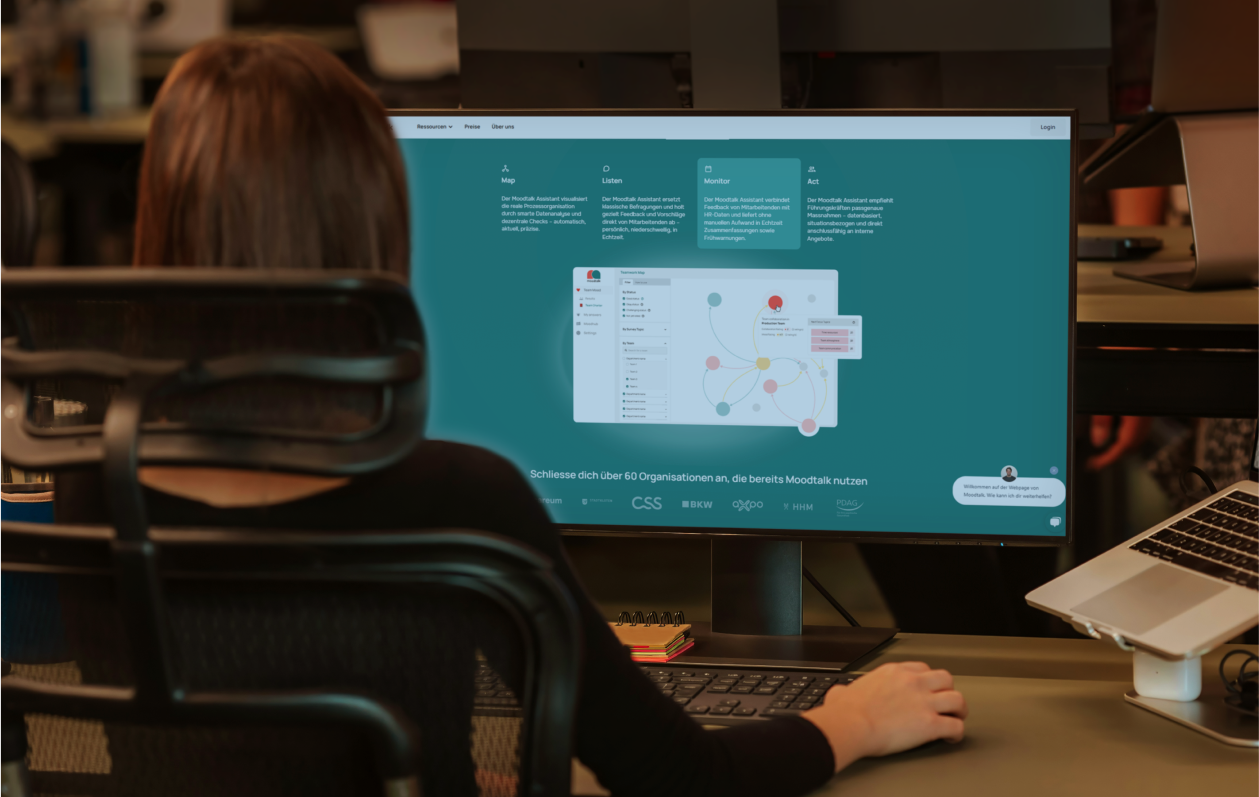Idea #2: Formulate Clear Expectations for Optimal Team Collaboration
Studies show that we are facing a pandemic of dissatisfied employees and declining employee engagement. This affects not only productivity and employee well-being but also their loyalty to the employer. As a result, turnover and absenteeism rates are skyrocketing.
One of the most effective ways to engage and motivate employees is to create full transparency and clarity about the team’s purpose and what all team members need to do to collaborate optimally. Our data shows that more and more companies are imposing top-down mandates about how many days employees must come into the office, and now leaders must implement this as a team. When done right, this can even increase employee engagement.
How can this be implemented?
We recommend using the concept of a team charter to establish clear goals and expectations within your team. A team charter is a document that outlines the team’s purpose, objectives, roles, and members’ expectations, creating a shared understanding of how the team will collaborate effectively, efficiently, and sustainably. Here is a step-by-step guide on how to create a team charter and engage your team members in the process.

Step 1: When can we find time to create our Team Charter 1.0?
Invite all team members to participate in a dedicated session to create the team charter. This meeting should focus solely on developing the charter to ensure everyone has enough time to contribute and collaborate. Moodtalk users typically schedule about 1 hour and 30 minutes for this meeting. Remember, this is a dynamic framework, and the rules will evolve over time. Establish the foundation in this session and then begin working with it.
Want a detailed framework for creating your first team charter?
Sign up here to receive a comprehensive guide for your first team charter.
Step 2: What is the general purpose of our team within the organization?
Start by discussing and defining the team’s mission. This should be a clear and concise statement outlining the team’s primary purpose and its contribution to the company’s overall goals.
For example: “Our team’s mission is to develop innovative marketing strategies that increase brand awareness and drive revenue growth.”
Step 3: What are the key collaboration rules our team must follow?
Companies define corporate values and leadership principles but often forget to let employees and teams interpret them and define what these mean for their daily work and collaboration style. Therefore, it is important to discuss this explicitly and establish clear, practical rules for how your team collaborates best.
It’s essential that every team member adheres to these rules and feels comfortable with them. Make sure these rules are clear and practical. Often, teams end up with rules like “We trust each other,” which is at the same abstract level as company values. How can we actually feel that we trust each other? What activities in our daily work demonstrate mutual trust? A clearer rule would be: “We don’t check up on each other because we trust one another.”
Step 4: How do we follow our Team Charter and what do we need to adjust?
Warning! The first three steps are useless without this last step. If you are not willing to hold regular meetings (e.g., once a month) to reflect on and discuss how well your team is adhering to the Team Charter rules, then you shouldn’t start this process at all. Otherwise, the whole process becomes pointless and only leads to frustration. It’s like signing up for a gym membership, attending an introductory session with the gym owner to learn how to use the equipment, and then never going back.
Regularly review the Team Charter to ensure it remains relevant and aligned with the team’s evolving needs and goals. Use an existing team meeting or set up a dedicated meeting specifically for reviewing the Team Charter.
It’s very important that all team members prepare for this meeting by spending 3–5 minutes going through all the Team Charter rules and assessing whether the team is following them. Then, discuss in the meeting which rules are well followed and why, which ones still have potential for improvement, and what is preventing adherence. Update the charter as needed to reflect any changes in goals, roles, or team dynamics.
We recommend holding this meeting at least once a month, as the pace of work life is very dynamic. Another advantage is that new team members integrate much faster because they have a clear framework of what is important for the team to work effectively together.
Conclusion
Given the rapid changes and increasing demands, leaders must prioritize employee engagement to ensure their teams remain productive and resilient. By introducing a team charter, you can foster a thriving work environment that not only boosts employee satisfaction but also contributes to the long-term success of the organization.
Sources










.jpg)













